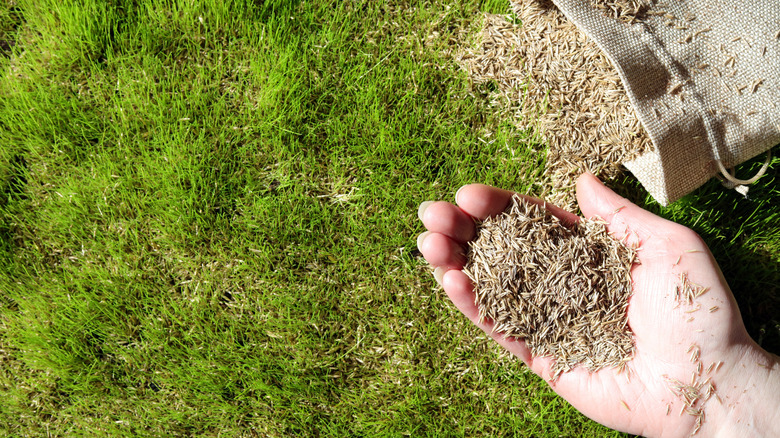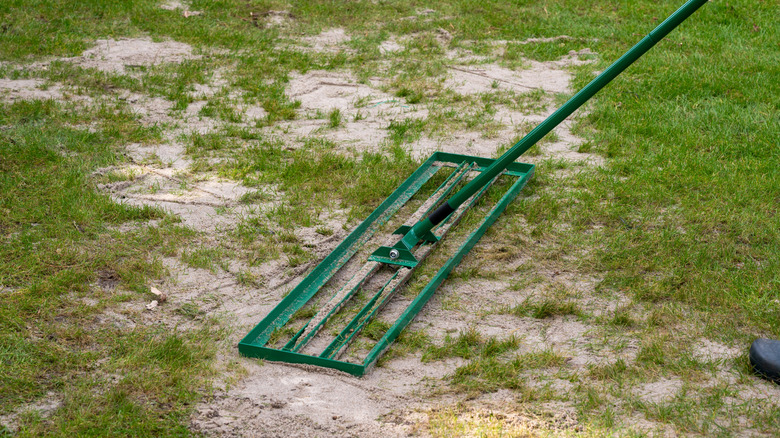The Best Time Of Year To Overseed A Lawn For Green Grass By Spring
Spring and early summer may be the times of year when your patchy and thin lawn bothers you most as you're trying to enjoy backyard picnics and barbecues. Unfortunately, these months aren't the best time to try to fix the frustrating issue. Instead, it's best to take steps to make your existing lawn thicker during the late summer or early fall. This can be done by either interseeding or overseeding.
While interseeding refers to adding seeds of the same species currently growing in your lawn, overseeding technically refers to adding seeds of a different grass species — though the two terms are often used interchangeably as they both involve planting grass seed in an existing lawn. Regardless of which strategy you're using to thicken your grass, seeding your lawn is best done when the soil is still warm from summer, but cooler nights are on the horizon to help your grass seedlings flourish. Overseeding and interseeding in early fall also ensures that your seedlings are less likely to face competition from common lawn weeds.
The best strategy for overseeding your lawn
Before you start overseeding or interseeding your lawn, make sure your current grass is short enough that the new seeds will easily make contact with the soil and won't be shaded out by taller blades of grass. It's best to mow your lawn to a height of around 2 inches for this. Once your lawn is ready, you can use a broadcast spreader to put down the new seeds. A rake can also be helpful for working the new seeds into the soil. You may even want to rent a slit seeder or similar tool if you want to power seed your lawn.
After you've completed the overseeding process in your turf, it's important to keep the seeds and young seedlings moist. You may need to water daily if you don't receive regular rain. You should also be sure to continue mowing your lawn to keep the existing grass from outcompeting the new seedlings. Another advantage to waiting until late summer or autumn to overseed your lawn is that it may not be as difficult to keep foot traffic off the new seedlings once children are back to school and temperatures have begun to drop. Fortunately, it should only take about a month before your lawn is once again available for play.

